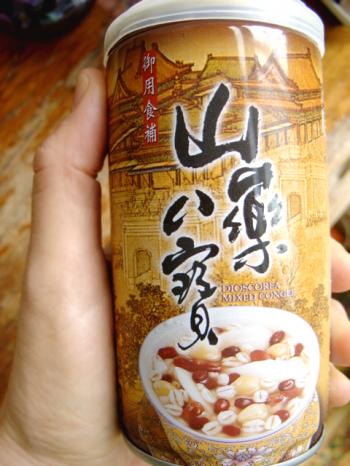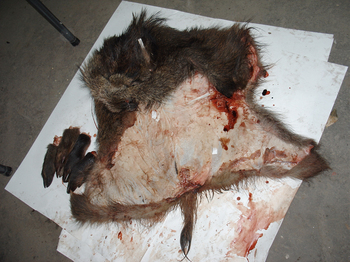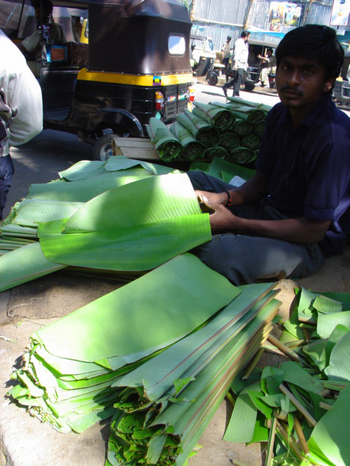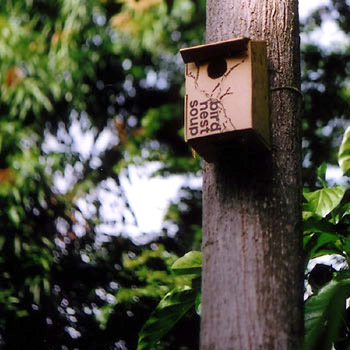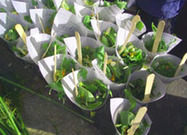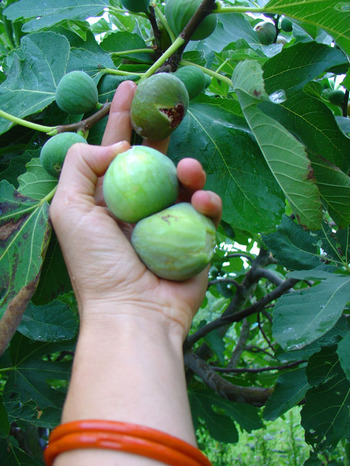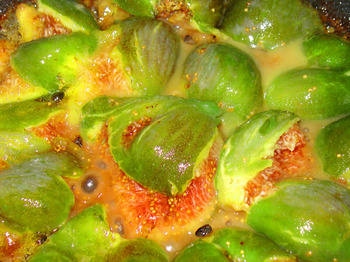Oh to utter the words, food design…
September 28, 2005
Well it’s about bloody time! Coinciding with all manner of design events going on right now in Amsterdam, the Stedelijk Museum hosted a symposium titled Food Design at the ubiquitous Club 11, featuring three speakers and three completely different interpretations.
Marije Vogelzang (Proef) is doing some very interesting work from her studio slash catering laboratory and counts the stars of Dutch design (such as the Ladies Hella Jongerius, Marlies Dekkers and Li Edelkoort) amongst her clients. After a stunning portfolio presentation, I can’t wait to visit Vogelzang’s restaurant in Rotterdam Proef and get down to the business of tasting and nibbling. (Proef means ‘taste’ or ‘taste it’, in Dutch.) Vogelzang’s work is all about engaging the eater in the underlying concept of the food and its presentation. I loved her daring in a recent catering project in which she used WWII ration ingredients to invoke memories about this bleak period. She elegantly walks the fine line between being thought provoking and utterly disarming when she stated, ‘It’s design that someone puts in their mouth, and absorbs into their body. It’s all very intimate’. That’s what I call a laudable attitude!
Although it wasn’t the most pleasant message to hear, I can’t stop thinking about the corporate presentation by Hans van Trijp from Unilever. Food design according to the multinational means designing the market context in which a food product exists, and has very little to do with actual food. Van Trijp described Honig’s SpongeBob pasta as the perfect marriage of food design and marketing. Predictably, I found van Trijp’s take and food and food design extremely disturbing, but I am so very eager to get in touch with him to hear more of what he has to say about how multinationals, even when we wouldn’t dream of buying their products, influence our every day life right down to the iggly niggly bit of designing a country’s infrastructure. This means that while Marije Vogelzang is designing a lunch using ‘forgotten vegetables’, Unilever, by the very virtue of it’s market share, is determining which races of grains farmers will be growing and how food will be manufactured and distributed in decades to come. I just can’t help but think it’s a wise idea to keep in close contact with the suits. I’m just as much a stakeholder as the next Lady, right?
Ex-designer and unwitting stand-up comedian Marti GuixĂ© as per usual wowwed the audience with a portfolio presentation of more than a decade’s worth of food-related projects. He is the well-known Catalunian ex-designer that has worked extensively with shoe brand Camper, and ultimately designed their flagship restaurant, Foodball, in Barcelona. Balls are something of a leitmotif in Marti G’s gastro-design as you can see from this author’s review. It might have been just the unfortunate lighting, but while presenting images of his ‘corporate sponsored food’, (in this case an omelette with a sauce-stamped Calvin Klein logo), GuixĂ© claims to have noticed van Trijp’s lip twitch.
Although I’m not willing to spill the beans just yet, I am looking forward to GuixĂ©’s collaboration with Mediamatic in just a few week’s time. GuixĂ© and Mediamatic will be opening up a temporary restaurant in the basement of the former TPG builiding where you’ll… read about it in culiblog.
images from l to r: Vogelzang’s salad course of city leafy greens (served with grilled pigeon breast), hanging etagĂšres made of 2nd hand plates designed by Vogelzang for Dutch fabric producer de Ploeg, Gin and Tonic Fog Party by Marti GuixĂ© (artificial indoor fog made of gin and tonic at Casco, Utrecht). The above images are from the (ex-)designers’ websites, © and hopefully also courtesy of Vogelzang and GuixĂ©.
debra at 9:03 | Comments (6) | post to del.icio.us
Fritz Haeg’s Edible Estates
homesteading on the suburban lawn
September 26, 2005

Start with one suburban home in Middle America (images of Salina Kansas Edible Estate © Fritz Haeg, used entirely with permission)
Situated on what was once a massive sugar beet plantation, the iconic housing development of Lakewood is an embodiment of an American Dream in which each single-family dwelling is presented on an ornamental carpet of manicured green. In the 1950âs, the Lakewood Park Company introduced assembly line housing developments to California constructing 17.500 homes on 3.500 acres in little over a year at a rate of about 1000 homes per month. In the last 3 months of 1950, families moved to Lakewood at a rate of 25 a day. Lakewood is now home to the Edible Estates regional prototype garden.

(image © Fritz Haeg, used entirely with permission)
In 2005, Edible Estates began transforming suburban lawns into spaces for food production, starting with the lawn of the Cox family in Salina, Kansas. The Edible Estate in Lakewood California is the home of the Foti Family who in 2006, de-lawned in favour of bio-diverse edible landscaping on Memorial Day weekend. The installation date couldnât have been more apt, and images of WWII Victory Gardens spring to mind. But Edible Estate gardens are not simply rows of corn, beans and zucchini. In fact the gardens are highly designed, aesthetic spaces that have been planted to produce the food of the region.

Transforming a lawn into a garden with edible plants
(image © Fritz Haeg, used entirely with permission)
Michael Foti kept a diary of the first year of their Edible Estate food production on his weblog. The blog was filled with sound gardening advice, useful for any homesteader and is larded with funny stories about his grub-eating chickens and the garden âthat ate his marriageâ.

A lush productive landscape in suburbia (image © Fritz Haeg, used entirely with permission)
- Fritz Haeg Edible Estates
- Weblog from the Foti Famil Farm
- NYTimes aaarticle on Fritz Haeg’s Edible Estates
debra at 12:34 | Comments (1) | post to del.icio.us
How to feel a food mile
September 19, 2005
If it takes me eleven days to really feel at home, just imagine how a piece of fruit must feel after travelling under much worse conditions and for a far greater distance! No wonder one must go to great lengths in the urban environment to find tasty fresh food. My head finally adjusted to being here this morning, which makes me think that I would have adjusted faster if I didn’t have one.
The photos above are of the things that I am missing the most since I’ve returned to the North. Although the sun does occasionally shine, I’ve been forced to hide my pedicure de campagne under woolen socks and fabulous boots. Life is one big give and take.
(Please read more… )
debra at 10:00 | Comments (1) | post to del.icio.us

